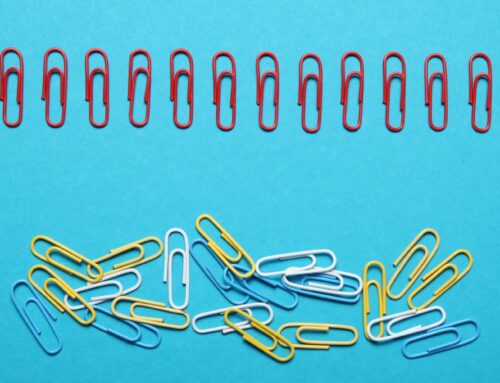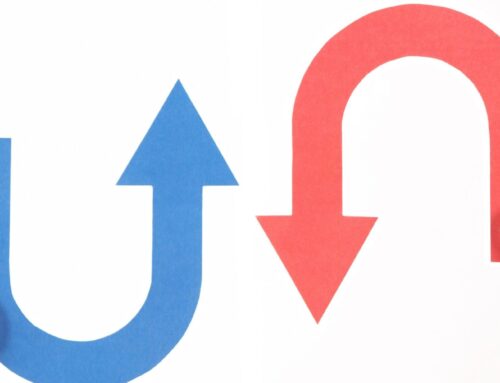
Jill and Bob recently handed their books off to their tax accountant, who just happens to know how to use QuickBooks Online (Isn’t that a coincidence?). After a quick glance at their QBO, the accountant, Caroline, asked why they didn’t reconcile their business’ bank accounts. Baffled by this question, Jill and Bob told Caroline that they did reconcile all of their bank accounts. When Caroline reacted with her hand to her forehead and an exasperated sigh, Jill and Bob wondered what they did wrong. Caroline then patiently explained that they didn’t reconcile QuickBooks Online to their bank statements. In this blog post, you’ll learn how to “really” reconcile your bank accounts (and avoid this awkward exchange with your accountant). I’ll show you how to reconcile bank statements to QuickBooks Online.
The bank feeds window is not the reconciliation window

First, let me eliminate a common misconception. Some QBO users assume that reconciling a bank account is when they add or match transactions in the bank feeds window. Unfortunately, this is not true. You cannot reconcile a bank account just by adding or matching transactions. However, if you do add and match transaction in the bank feeds window first, the reconciliation of your bank statement to QBO will go much smoother.
You need a monthly bank statement
To “really” reconcile, you’ll need a monthly bank statement because you must to enter some information from this statement directly into QBO and verify that the transactions which cleared your bank actually match the transaction recorded in your books.
A bank statement usually comes in the mail every month, unless you’ve opted to go paperless. In most cases, you can see your bank statements online, by logging into your bank account. Bank statements from various banks may look a little different from each other, but they do have a few things in common. These commonalities include:
- Date range: This is usually from the first day of the month to the last day of the month (To reconcile QuickBooks to your bank statement, you will need to know the ending date and the ending balance from the bank statement).
- Beginning balance: This is the bank balance on the first day of the period.
- Ending balance: This is the bank balance on the last day of the period.

Once you’ve got a copy of your bank statement, You will be ready for this next step.
How to get to the QBO bank reconciliation window
Next, let’s go to the window where you’ll actually perform a bank reconciliation.
- Select the Gear Icon.
- Then, select Reconcile.

If you see the following message, just select Reconcile an account.

- Under Account, select the bank account you wish to reconcile.
- Beginning balance: This beginning balance on your monthly bank statement or the ending balance from a previous bank reconciliation (which should be the same amount).
- Ending balance: Enter the ending balance that you see on your bank account statement.
- Ending date: Enter the ending date that you see on your bank account statement.
- Lastly, select Start reconciling.

A tour of the bank reconciliation window in QuickBooks Online
OK, this may seem overwhelming at first. But don’t worry. I’ll go over each section.
At the top of the bank reconciliation window, you will see a summary showing:
- Beginning balance: This is the ending balance from a prior bank statement as well as the beginning balance of the most recent bank statement.
- Ending balance: This is the ending balance that you see on your bank account statement.
- Payments: These are money-out transactions, such as checks and electronic payments.
- Deposits: These are money-in transactions that you receive from customers.

Next, you will see a lot of words and numbers that may not make sense. So, let me break everything down.

1. Date: This is the date of the transaction

2. Cleared Date: This is the date the transaction cleared the bank. This is also the date of the transaction when you first see it in the banking center.

3. Type: This is the transaction type. (This is a check, a bill payment, a deposit, or a refund?)

4. Ref No: Some, but not all, transaction have a reference number. The most common Ref No. is a check number.

5. Account: This is the transaction’s income or expense category

6. Payee: This is the vendor or customer name.

7. Memo: This is additional transaction information entered into QBO.

8. Match Symbol: A green match symbol next to a transaction means that the transaction was added or matched in the banking center (bank feeds). Ideally, you want all of the transactions in the reconciliation window to have a match symbol next to them.

9. Payment: This column is for money-out transactions. You will also see the payment amount next to each transaction.

10. Deposit: This column is for money-in transactions. You will also see the deposit amount next to each transaction.

When looking at the reconciliation window from this perspective, it looks similar to the banking center (bank feeds). So, it’s actually not all that complex. The main difference is that there are a few more columns that we need to pay attention to.
Here’s a screenshot to show comparison.

How to reconcile a bank statement in the QBO bank reconciliation window
On your bank statement, look at each transaction one-by-one.
For Example: The bank statement shows an expense for Hick’s Hardware for $24.38 on December 9, 2018.

Find the same transaction (Hick’s Hardware, 12/9/2018) in your bank reconciliation window, and check the circle next to that transaction. This will mark the transaction as “cleared” in the bank reconciliation.

Continue selecting all the transactions that appear on your bank statement. Once you have selected all the transactions, the difference on the upper-right should be zero.

Select Finish now to reconcile.

Once you finish reconciling, you will have the option to view your reconciliation report. To view your reconciliation report, just select View report.

You will see a copy of your reconciliation report. Be sure to save this report for your records.

Why should you reconcile your bank statements to QBO?

When you reconcile to your bank statements, you are verifying that each transaction posted in QBO is an actual transaction. This is done in order to check for potential data-entry errors, such as duplicate transactions, missing transactions, or incorrectly entered transactions. A proper reconciliation will allow you to detect these data-entry errors. Failure to reconcile your bank statements may cause data-entry errors to go unnoticed. If data-entry errors are not corrected, then your financial statements will no longer be accurate, which can lead to potential tax consequences.
How often should you reconcile to your bank statements?

You should reconcile QBO to your bank statement every single month. We recommend doing this reconciliation by the 5th day of each month. Mark a date on your calendar and make it a routine to reconcile every month.
Closing
Reconciling bank statements to QuickBooks Online on a monthly basis is a critical part of doing your own bookkeeping. Jill and Bob learned the hard way that not reconciling their bank statement to QBO will lead to unnecessary stress around tax time. Your tax accountant will be delighted and impressed …
So, what if a bank account has never been reconciled in QuickBooks Online? Or, how do you troubleshoot reconciliation problems? These situations can seem like major problems, but there are solutions which I will go over in future blog posts.
Stay tuned and best wishes.









